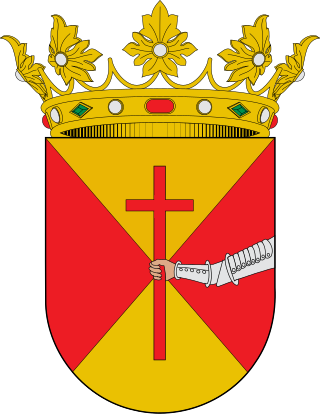
Duke of Tetuán is a hereditary title in the Peerage of Spain, accompanied by the dignity of Grandee and granted in 1860 by Queen Isabella II to General Leopoldo O'Donnell, 1st Count of Lucena, who had served as the Prime Minister of Spain for several legislatures between 1856 and 1866.

Duke of Cardona is a hereditary title in the Peerage of Spain, accompanied by the dignity of Grandee. The title was granted in 1491 by Ferdinand II to Juan Ramón Folch de Cardona, 5th Count of Cardona, as an elevation to dukedom.
It was originally granted as "Viscount of Cardona" (1040-1375) and later elevated to "Count of Cardona" (1375-1491), as a noble title in the 15th century to members of the Catalan family known as "Folch de Cardona".
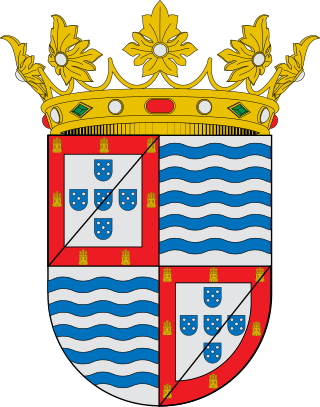
Duke of Abrantes is a hereditary title in the Peerage of Spain, accompanied by the dignity of Grandee and granted in 1642 by Philip IV to Alfonso de Láncaster, son of the 3rd Duke of Aveiro and a great-grandchild of John II of Portugal. It takes its name from the city of Abrantes in Portugal.

Duke of Frías is a hereditary title in the peerage of Spain accompanied by the dignity of Grandee, created in 1492 by King Ferdinand II of Aragon and conferred to his son-in-law Don Bernardino Fernández de Velasco, 2nd Count of Haro, Constable of Castile, and Viceroy of Granada. It is one of the most important titles in Spain and one of the first titles to receive the honor of Grandee of Spain by Emperor Charles V in 1520.

Duke of Uceda is a hereditary title in the Peerage of Spain, accompanied by the dignity of Grandee and granted in 1610 by Philip III to Cristóbal Gómez de Sandoval, who succeeded his father Francisco Gómez de Sandoval, 1st Duke of Lerma as the king's favourite.
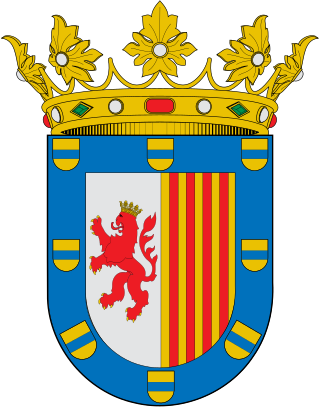
Duke of Arcos is an hereditary title in the Peerage of Spain, granted by Isabella I in 1493 to Rodrigo Ponce de León, then 4th Count of Arcos. The dukedom is among the first 25 titles which reached the rank of Grandee of Spain 1st Class, in 1520. Nowadays however, all Grandees are of the same class.
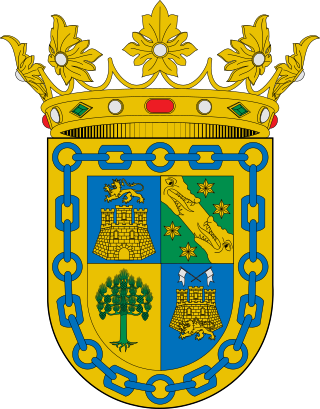
Duke of la Torre is a hereditary title in the Peerage of Spain, accompanied by the dignity of Grandee and granted in 1862 by Isabella II to Francisco Serrano, Count consort of San Antonio, in acknowledgement of his loyalty during his time as Captain General of Cuba.

Duke of Escalona is a hereditary title in the peerage of Spain, accompanied by the dignity of Grandee and granted in 1472 by Henry IV to Juan Pacheco, 1st Marquess of Villena.

Duke of Aliaga is a hereditary title in the Peerage of Spain, accompanied by the dignity of Grandee and granted in 1487 by Ferdinand II to Juan Fernández de Híjar, Count of Aliaga, Duke of Híjar and later also Duke of Lécera.

Duke of Benavente is a hereditary title in the Peerage of Spain, accompanied by the dignity of Grandee and granted in 1473 by Henry IV to Rodrigo Alonso Pimentel, 4th Count of Benavente.

Duke of Arco is a hereditary title in the peerage of Spain, accompanied by the dignity of Grandee and granted in 1715 by Philip V to Alonso Manrique de Lara, 4th Count of Montehermoso, knight of the Order of the Golden Fleece and his caballerizo mayor for two periods, 1721–1724 and 1724–1737.

Duke of Fernán Núñez is a hereditary title of nobility in the Peerage of Spain accompanied by the dignity of Grandee. The Countship of Fernán Núñez granted in 1639 to Alonso Gutiérrez de los Ríos was elevated to a dukedom in 1817 in the person of Carlos Gutiérrez de los Ríos, who became the 1st Duke of Fernán Núñez. The accompanying Grandeeship was granted in 1728, prior to being elevated to a Dukedom.

Duke of Santoña is a hereditary title in the Peerage of Spain accompanied by the dignity of Grandee, granted in 1875 by Alfonso XII to Juan Manuel de Manzanedo, an important railway and banking tycoon who contributed greatly to the Bourbon Restoration in Spain.

Duke of Bailén is a hereditary title in the peerage of Spain accompanied by the dignity of Grandee and granted in 1833 by Ferdinand VII to Francisco Javier Castaños for his military achievements during the Peninsular War as Captain general of the Royal Spanish Armies, becoming the first man to defeat Napoleon in an open field battle.

Duke of San Fernando Luis is a hereditary title in the Peerage of Spain, accompanied by the dignity of Grandee and granted in 1816 by Ferdinand VII to Anne-Adrien-Pierre de Montmorency-Laval, for his efforts as Ambassador in Spain during the Bourbon Restoration.

Duke of San Pedro de Galatino is a hereditary title in the Peerage of Spain accompanied by the dignity of Grandee, granted in 1621 by Philip IV to Juan Bautista Spínola, a Genoese nobleman.

Duke of Tamames is a hereditary title in the Peerage of Spain, accompanied by the dignity of Grandee and granted in 1805 by Charles IV to Antonio María Mesía del Barco, 22nd Lord of Tamames and 7th Marquess of Campollano.

Duke of Victoria de las Amezcoas is a hereditary title in the Peerage of Spain, accompanied by the dignity of Grandee and granted posthumously in 1836 by carlist pretender to the throne Infante Carlos as Charles V to Tomás de Zumalacárregui, captain general of the Carlist army, along with the Countship of Zumalacárregui.
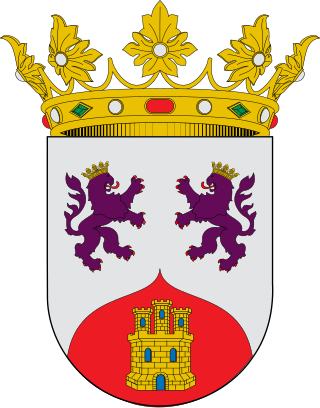
Duke of Arjona is a hereditary title in the Peerage of Spain, accompanied by the dignity of Grandee and granted in 1423 by John II to Fadrique Enríquez de Castilla, Count of Trastámara and a great-grandchild of Alfonso XI.

Duke of Medina de las Torres is a hereditary title in the Peerage of Spain, accompanied by the dignity of Grandee and granted in 1625 by Philip IV to Gaspar de Guzmán, 3rd Count of Olivares and royal favourite to the king. A few days later, the king granted him the Dukedom of Sanlúcar la Mayor.





















